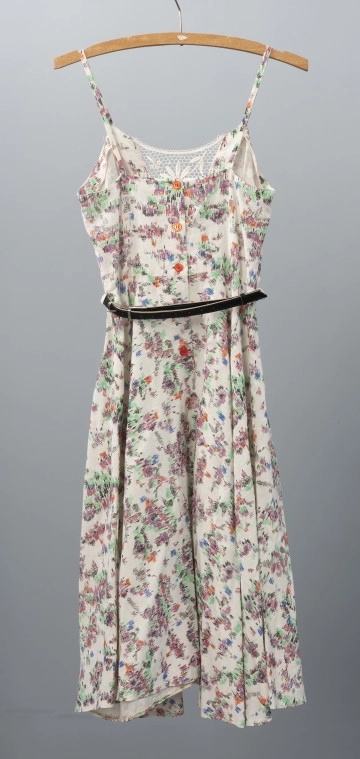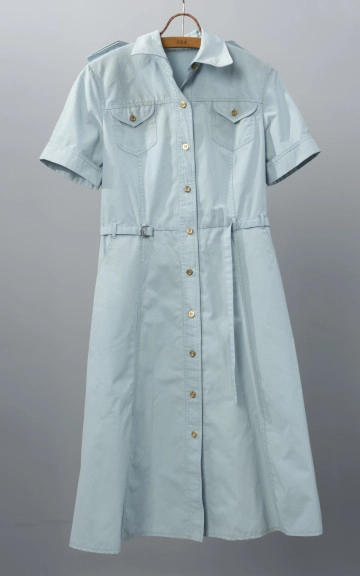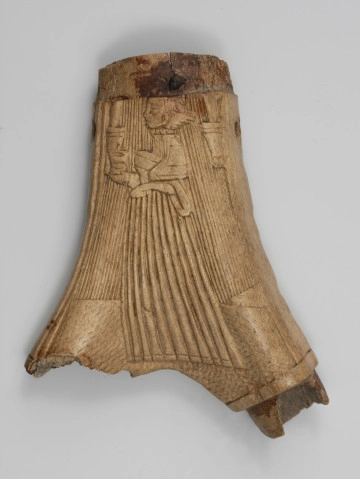
Summer dress by DANA
1967 — 1989
National Museum in Szczecin
Part of the collection: Goldsmith craftsmanship
Goblets with elaborate, symbolic or humorous forms played an important role during Renaissance and Baroque court ceremonies. Vessels of this type were wedding cups produced from the mid-16th century onwards, mainly in Nuremberg, in the form of a young woman in rich dress, holding a silver-framed shell bowl high above her head. They had an ambiguous, frivolous character, as the groom fulfilled his toast from a bowl formed by the upturned skirt of a lady, while at the same time the bride drank from a shell, connected to the rest of the vessel by hinges.
The cup from the Szczecin collection is a 19th century imitation of these exceptional works of art. The young lady is depicted in an outfit reminiscent of courtly women's fashion from around 1600. The top dress with short sleeves and a heavily laced bodice emphasises the slimness of the waist. The skirt is richly decorated with motifs of birds, bunches of fruit and Schweifwerk ornamentation passing into acanthus leaves. The goblet she holds mimics the shape of a shell in a silver frame. Both the form of the vessel and the ornamental motifs are modelled on late Renaissance works – but with some simplifications, such as the replacement of the real shell with a bowl forged in silver. The goblet was made by one of the most famous manufacturers specialising in imitations of old silverware – Neresheimer & Co. of Hanau. The goldsmith's marks stamped on the vessel refer to Augsburg and Lüneburg, two important German centres of Renaissance goldsmithing, which serve as inspiration for historicising works.
Monika Frankowska-Makała
Author / creator
Object type
goblet
Technique
casting, repoussage, punching, gilding
Material
silver
Origin / acquisition method
purchase
Creation time / dating
Creation / finding place
Owner
Muzeum Narodowe w Szczecinie
Identification number
Location / status

Zakłady Przemysłu Odzieżowego DANA, Szczecin (1945 - około 2001)
1967 — 1989
National Museum in Szczecin

Zakłady Przemysłu Odzieżowego DANA, Szczecin (1945 - około 2001)
1967 — 1989
National Museum in Szczecin

unknown
1501 — 1600
National Museum in Szczecin
DISCOVER this TOPIC
Museum of King Jan III's Palace at Wilanów
DISCOVER this PATH
Educational path
0/500

We use cookies to make it easier for you to use our website and for statistical purposes. You can manage cookies by changing the settings of your web browser. More information in the Privacy Policy.
We use cookies to make it easier for you to use our website and for statistical purposes. You can manage cookies by changing the settings of your web browser. More information in the Privacy Policy.
Manage cookies:
This type of cookies is necessary for the website to function. You can change your browser settings to block them, but then the website will not work properly.
WYMAGANE
They are used to measure user engagement and generate statistics about the website to better understand how it is used. If you block this type of cookies, we will not be able to collect information about the use of the website and we will not be able to monitor its performance.